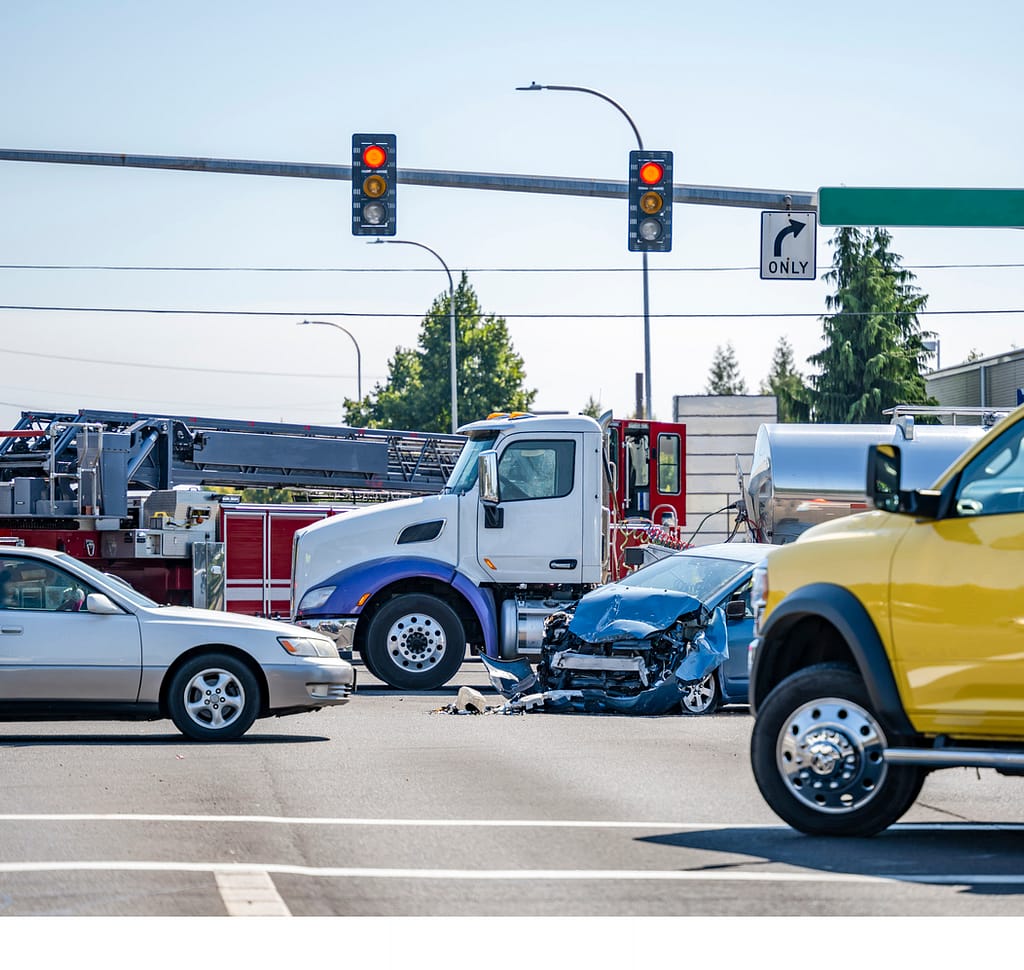The Freight Movement Challenge
Freight mobility is vital for maintaining healthy, resilient, and vibrant communities. Urban, suburban, and rural markets across the US depend on commercial, heavy vehicles to move goods efficiently and safely. However, supply-chain bottlenecks and increasing demand for goods to be delivered “just in time” remain a challenge, particularly in congested networks.
Transportation professionals are continually developing and assessing new tools and models to enable more efficient goods and freight delivery. These same professionals know that sustainable and socially acceptable freight delivery improvements need to be accompanied by positive and equitable impacts on road safety, congestion, and emissions for all road users on the network.
Delivering these improvements simultaneously is tremendously challenging in cities grappling with a multitude of competing priorities, so key partnerships, new approaches, and innovative solutions are needed.

The Freight Movement Context
Freight movement not only impacts our freeways, but also impact major and minor arterials that often carry high volumes of trucks. Goods are moved on these corridors between distribution centers, airports, railroad hubs, manufacturing hubs, ports, and to our homes and businesses every day. The complexity of the freight delivery context arises as a result of goods being delivered in competition with or complementary to children rushing to schools, emergency service vehicles responding to critical events, morning and evening commuters, and the vast array of discretionary travel undertaken on any given day to name but a few.
Once off of the freeway system that connect major freight hubs and ports to cities, goods are moved via commercial vehicles through signalized and unsignalized intersections, midblock crossing locations, and roads that are used by vulnerable road users (VRUs). Freight vehicles, particularly loaded vehicles– take longer to slow down and stop in the case of an emergency, suffer from restricted visibility of VRUs particularly children, obstruct the sight lines of nearby passenger vehicles, and are overall less maneuverable. At a minimum, efforts to deliver extra margins of safety in this context is warranted.
The Solution Part 1: The Connected Freight Corridor
Without timely, accurate, and actionable data and notifications, freight drivers face significant challenges. They’re unable to make optimal decisions in terms of route choice, speed selection, and departure and arrival timing resulting in unnecessary congestion and associated safety risks impacting themselves and other road users.
Connected freight corridors leverage connected vehicle technologies to link drivers with smart infrastructure (such as signal timing and video data) and data from other vehicles. These connections provide drivers with actionable and real-time data (such as risk warnings) for improved decision-making. Connected Vehicle-to-Everything (V2X) technology offers a standardized, low-latency, and secure pathway for both freight and delivery fleets and agencies to operate on a platform that can be delivered across the U.S.
A connected freight corridor can deliver signal prioritization and optimization for freight and delivery vehicles (signal prioritization is also available for transit, first responders, and other public vehicle fleets). The goal is to enable freight vehicles (and other road users) to reduce their travel times, reduce emissions by reducing hard braking and unnecessary idling, and deliver goods in the safest manner possible.
The Solution Part 2: Real-Time Situational Awareness and Safety Messaging
Advanced Mobility Analytics Group (AMAG) and P3Mobility have partnered to enhance existing connected corridor technology to create safer and smarter connected freight corridors. The combined solution focuses on goods movement on arterials off the freeway system, which often involve a wide mix of road users including VRUs. The combined technology continually monitors the safety of signalized and unsignalized intersections, midblock crossings, and other high priority zones and transmits this information to drivers.
The integrated technology solution delivers real-time situational awareness (SA) of potentially high-risk events to drivers. The SA is achieved by leveraging AMAG’s AI computer vision models running on low-latency AWS Panorama EDGE compute devices, integrated with P3 Mobility’s V2X Platform.Crash risks involving VRUs and other vehicles along the freight corridor are analyzed and detected in real time, and sent to vehicle operators to avert the potential conflict. The integrated solution can also detect, in real-time, increasing congestion and promptly alert freight vehicle operators to adjust driving speeds for safety andto optimize fuel consumption. The integrated P3Mobility/AMAG solution builds VRU safety protection into the complex freight delivery task, re-imagining the Connected Freight Corridor.
Sustainable Funding: Enabling Agencies to Help Fund Connected Freight Corridors
P3Mobility offers a unique software subscription model that enables transportation agencies to charge operators of freight and delivery fleets to receive signal prioritization services by paying transaction tolls. This capability complements any grant or other funding to help cover upfront investment costs, but also ongoing maintenance and support expenses.
Learn More About Connected and Safe Freight Corridors
Supply chains in many road networks are adversely impacted by the lack of real-time and accurate data for drivers and VRUs in freight corridors require extra margins of safety. The integrated P3Mobility/AMAG solution addresses these gaps. Please contact P3 Mobility or AMAG to inquire about a blueprint for developing a successful Connected Freight Corridor plan, funding, and implementation at sales@amagroup.io or jeremy.ward@p3mobility.com.